Explore Durban - South Africa Travel, Africa
Durban, located on South Africa's eastern coastline, is a lively city that seamlessly mixes relaxed beach moods with rich cultural activities. Known for its subtropical climate, golden sandy beaches, and buzzing local life, Durban stands out as one of the country’s premier travel destinations. From thrilling outdoor activities along the Golden Mile to exploring markets filled with Indian spices and Zulu crafts, visitors are spoilt for choice. Let's uncover the best that this remarkable city has to offer, from its diverse cultural heritage to its incredible food and friendly locals.
Population: Approximately 3.3 million in 2024.
Economy: Durban’s economy thrives on tourism, shipping, manufacturing, and agriculture. As South Africa’s busiest port city, Durban supports trade, industry, and a growing tourism sector.
Landmarks: Famous for the Moses Mabhida Stadium, uShaka Marine World, and the Golden Mile.
South Africa
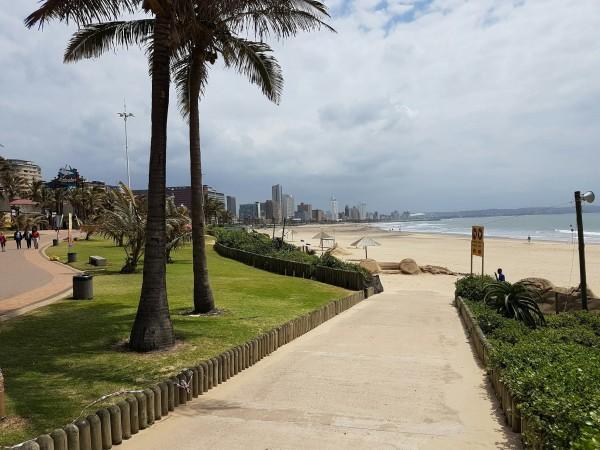
Overview of Durban
History & Cultural Influence
Established in 1824, Durban quickly grew from a small settlement to a bustling port city, playing a major role in South Africa’s colonial history. The influence of Zulu culture, Indian immigrants, and British colonization is evident in every corner of the city, making Durban a cultural melting pot like no other. The Zulu people, who have lived in the area for generations, have preserved their rich cultural history via song, dance, and art. Equally important is Durban’s Indian influence. In the late 19th century, Indian laborers were brought to work on the sugarcane plantations. Today, Durban boasts the largest Indian community in South Africa, which has significantly shaped its food, culture, and daily life.
Interaction with the Locals
Durban has a population of approximately 3.3 million, making it one of South Africa's major cities. Its population is a diverse blend of cultures, primarily consisting of Zulu, Indian, and European communities. This rich cultural mix is reflected in the city’s food, traditions, and daily life. Local citizens of Durban are known for their warmth and hospitality, making visitors feel welcome while offering a glimpse into the city's vibrant, multicultural identity.
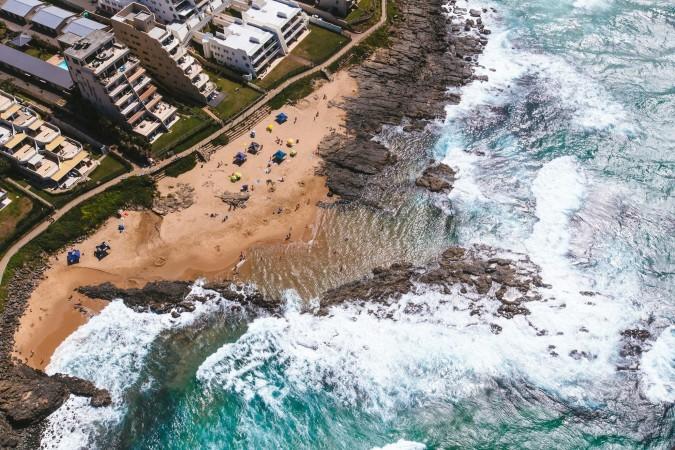
Durban's stunning coastline - © Jason Briscoe
Top Attractions in Durban
Durban’s top attractions offer a mix of outdoor adventure, family-friendly fun, and cultural experiences, ensuring that there’s always something to explore.
Moses Mabhida Stadium
A defining feature of Durban’s skyline, the Moses Mabhida Stadium is a must-see attraction for visitors. Beyond its architectural beauty, the stadium offers thrilling experiences such as the Big Rush Swing, the world’s largest rope swing. If you’re looking for a less heart-racing activity, take the SkyCar to the top for panoramic views of the city and coastline.
uShaka Marine World
One of the largest marine-themed parks in the world, uShaka Marine World is a hit for families and marine life enthusiasts. The park combines world-class aquariums, water slides, and live entertainment. It's a fun and educational way to spend the day, offering everything from shark diving to seal shows.
Golden Mile
For those who prefer relaxation, Durban’s Golden Mile is an iconic beachfront promenade lined with hotels, restaurants, and shops. Stretching for miles along the Indian Ocean, it’s the perfect place for a leisurely walk, a bike ride, or simply soaking up the sun. The beach is also great for surfing, with waves suitable for both beginners and pros.
Durban Botanical Gardens
Escape the hustle and bustle of the city at the Durban Botanical Gardens, the oldest surviving botanical garden in Africa. It’s a peaceful retreat where you can discover rare plant species, take a guided garden tour, or enjoy a picnic under the shade of centuries-old trees.
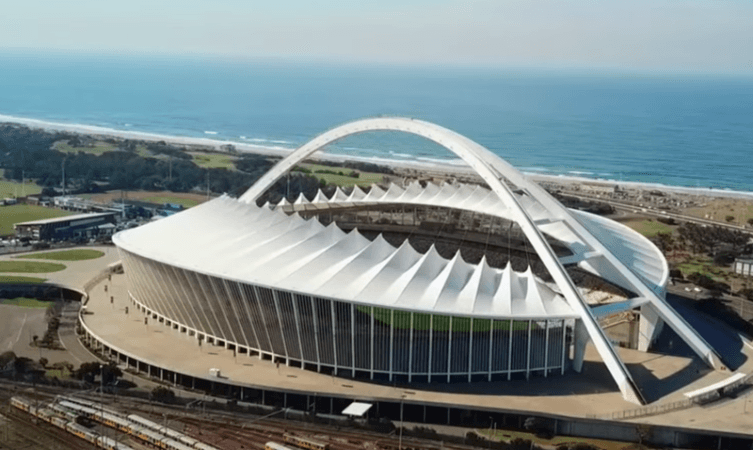
Moses Mabhida Stadium - © East Coast Radio
Must-Try Dishes in Durban
Durban’s culinary tradition is a rich tapestry of flavors, shaped by the city’s diverse cultural influences. From spicy curries to traditional Zulu fare, Durban offers a wide array of mouth-watering dishes that reflect its Indian, African, and colonial heritage.
- Bunny Chow: A true Durban icon, Bunny Chow is a must-try. This dish consists of a hollowed-out loaf of bread filled with curry, usually chicken, lamb, or vegetables. It's a substantial, tasty dinner that started in the Indian community and is now popular with everyone.
- Samoosas: Found at almost every street corner, samoosas are crispy pastry pockets stuffed with spiced fillings such as meat, potatoes, or lentils. These savory snacks are influenced by Durban’s Indian community and make for a perfect street food treat.
- Braai: A braai, or South African BBQ, is a cultural event in itself. Expect a variety of grilled meats such as boerewors (a type of sausage), steaks, and chicken, accompanied by traditional sides like chakalaka (spicy vegetable relish) and pap (maize porridge).
- Breyani: Breyani, also spelled biryani, is a fragrant Indian rice dish cooked with layers of spiced meat (usually chicken or lamb), lentils, and vegetables. Often garnished with fried onions, boiled eggs, and served with a side of sambals (fresh chutneys), Breyani is a comforting, aromatic dish perfect for lunch or dinner.
- Amadumbe: For a taste of traditional Zulu food, try amadumbe, a type of root vegetable similar to sweet potatoes. Often mashed with butter or honey, amadumbe can be served as a side dish or enjoyed on its own.
- Melktert: On the sweeter side, Melktert (milk tart) is a creamy, cinnamon-dusted dessert made with a milk-based custard filling in a pastry crust. This South African favorite is popular at family gatherings and known for its mild, soothing taste.
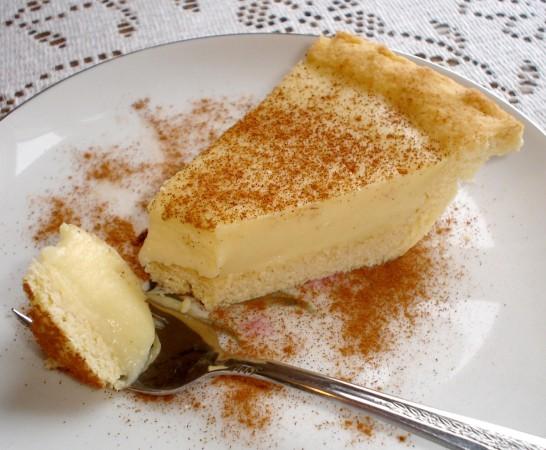
Melktert - © Food.com
Festivals & Local Celebrations
Diwali (Festival of Lights)
Durban’s celebration of Diwali, also known as the Festival of Lights, is one of the most vibrant in the world outside of India. This Hindu festival marks the triumph of light over darkness and good over evil. The city lights up with fireworks, traditional lamps, and colorful decorations. Local communities hold special prayers and feasts, and there are numerous cultural performances, including music and dance. The festival is a sensory delight, with streets filled with the aroma of Indian sweets and savory dishes, providing a rich cultural experience that highlights Durban’s significant Indian heritage.
Zulu Reed Dance (Umkhosi Womhlanga)
The Zulu Reed Dance, or Umkhosi Womhlanga, is an important annual cultural festival that takes place in the northern part of KwaZulu-Natal, not far from Durban. It is a significant rite of passage for young Zulu women, who present reeds to the Zulu King as a symbol of purity and unity. The festival is marked by traditional singing, dancing, and the wearing of colorful beadwork and traditional attire. It’s a powerful celebration of Zulu culture and heritage, offering visitors a chance to witness one of South Africa’s most vibrant and historic cultural ceremonies.
The Durban International Film Festival (DIFF)
The Durban International Film Festival is one of Africa's premier film festivals, featuring a broad selection of films from all around the world. The festival, which is held yearly, provides a venue for aspiring filmmakers and experienced artists to showcase their work. With screenings, workshops, and panel discussions, DIFF is not just a celebration of film but also a hub for cultural exchange and industry networking. Attendees can enjoy a wide range of films, from feature-length dramas to documentaries, and engage with filmmakers and industry professionals in an inspiring and dynamic setting.
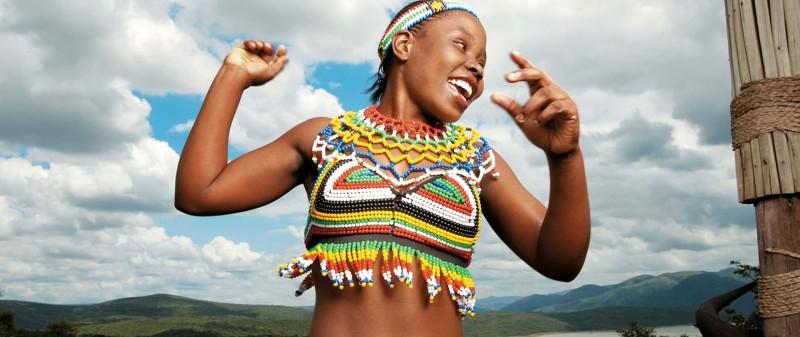
Zulu Reed Dance (Umkhosi Womhlanga) - © South African Tourism
What to Do in Durban
- Surfing on the Golden Mile: Durban’s Golden Mile is a haven for surfers, known for its long, sandy beaches and consistent surf conditions. Surf schools along the promenade offer lessons and equipment rentals, making it easy for newcomers to hit the waves.
- Scuba Diving & Snorkeling: For underwater enthusiasts, Durban’s Aliwal Shoal is a top diving destination. The warm Indian Ocean waters ensure that scuba diving and snorkeling are enjoyable year-round, making Durban a prime location for aquatic adventures.
- Hiking in the Valley of 1000 Hills: Just outside Durban, the Valley of 1000 Hills offers breathtaking landscapes and outdoor activities. The valley is dotted with scenic hiking trails that range from easy walks to more challenging hikes, providing stunning views of rolling hills, lush greenery and local wildlife.
- Exploring Durban Botanic Gardens: The Durban Botanic Gardens is a serene escape in the heart of the city, featuring a diverse collection of plants, including indigenous species, exotic flowers, and a remarkable cycad collection.
- Relaxing at Durban’s Beaches: Enjoy sunbathing on the sandy shores, beach volleyball, or a leisurely swim in the warm Indian Ocean. The beachfront promenade is perfect for a scenic walk, bike ride, or simply enjoying the ocean views.
Shopping in Durban
- Victoria Street Market: For a taste of Durban’s multicultural vibe, head to the Victoria Street Market. This bustling marketplace is filled with stalls selling everything from Indian spices and street food to African crafts and Zulu beadwork. It’s the perfect spot to pick up unique souvenirs that capture the essence of Durban’s rich heritage.
- Gateway Theatre of Shopping: One of the largest malls in the Southern Hemisphere, the Gateway Theatre of Shopping offers a modern retail experience. Here, you’ll find international and local brands, dining options, and entertainment such as a cinema and indoor climbing wall.
- Local Craft Markets: Durban’s craft markets are a treasure trove of handmade goods, where you can find traditional Zulu beadwork, pottery, and other locally made art. These markets are an excellent opportunity to support local craftspeople while also bringing home a bit of South African culture.
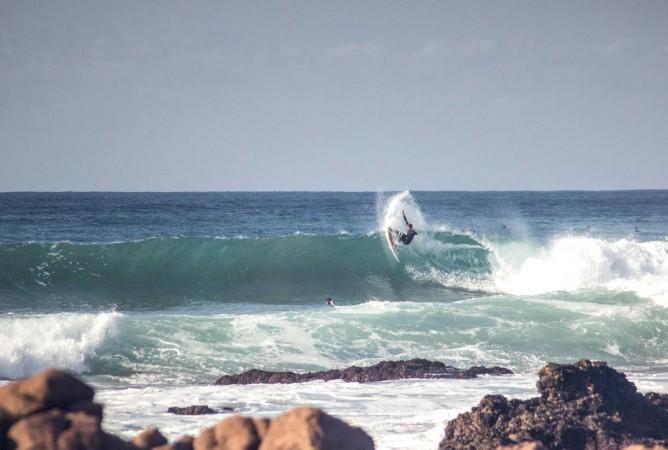
Surfing on the Golden Mile - © Ronald Langeveld
Weather in Durban: Best Time to Visit
Durban's subtropical climate makes it a year-round destination for tourists, with warm temperatures and ample sunshine throughout the year. The city enjoys a pleasant climate that significantly enhances the experience of its outdoor attractions and beach activities.
Spring in Durban
Spring ushers in warmer temperatures and increased humidity, with temperatures ranging from 15°C to 27°C (59°F to 81°F). The city begins to bloom with vivid flowers and foliage, while intermittent rains keep the landscape lush. It’s a great time to visit the Durban Botanic Gardens and enjoy the city’s outdoor spaces.
Summer in Durban
Durban’s summer season is hot and humid, with temperatures ranging from 21°C to 28°C (70°F to 82°F). This is the ideal time to enjoy the city's beaches and water activities. Summer also brings regular afternoon thunderstorms, which provide a welcome relief from the heat. Visitors should expect extreme humidity and sometimes heavy rain.
Autumn in Durban
Autumn in Durban is characterized by warm, dry weather with temperatures ranging from 16°C to 25°C (61°F to 77°F). This season is ideal for outdoor activities and exploring the city without the intensity of summer heat. Rainfall decreases, making it a great time for beach outings and sightseeing.
Winter in Durban
Winter in Durban is mild and dry, with temperatures ranging from 11°C to 23°C (52°F to 73°F). The weather is sunny and comfortable, making it perfect for beach visits and outdoor adventures. Winter is also the least humid season, making it an ideal time for travelers to visit the city's attractions.
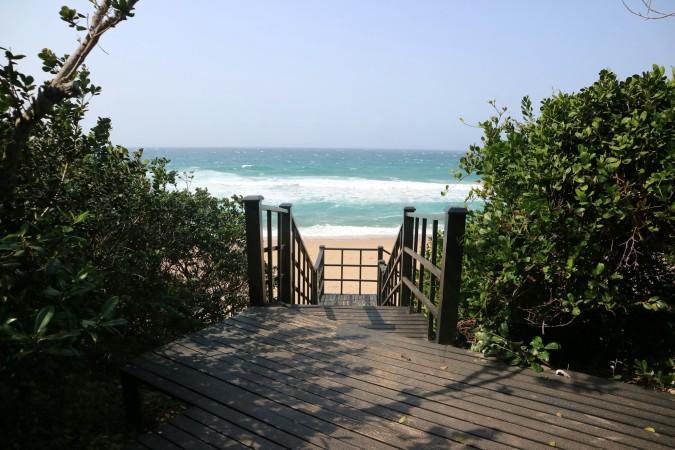
Any day is a good day to visit Durban's beach - © Angelo Moleele
Essential Travel Information
Getting Around Durban
- Public Transport: The city’s public transport system includes buses that cover key routes and neighborhoods. These buses are an affordable option for getting around but may not always be the most convenient choice for tourists unfamiliar with the routes.
- Minibus Taxis: Minibus taxis are a popular and cost-effective way to travel within Durban. While they provide an economical transportation option, they can be crowded and might not be ideal for visitors who are unfamiliar with the routes.
- Car Rentals: Renting a car is a convenient choice for tourists who prefer to explore Durban at their own pace. The city is well-connected with major roads and highways, making it easy to reach various attractions and nearby destinations.
- Ride-Sharing Services: Ride-sharing apps offer a reliable and flexible transportation option in Durban. These services provide a comfortable and safe way to get around the city, with the added convenience of booking and paying through your smartphone.
- Bicycles and Walking: Durban’s beachfront promenade is perfect for walking and cycling, allowing you to explore the coastline and enjoy scenic views at your own pace.
ATM & Banking Services
In Durban, accessing banking services is straightforward with numerous ATMs and banking facilities available throughout the city. ATMs are widely located at shopping centers, banks, and major tourist areas, providing convenient access to cash and accepting most international cards. For more comprehensive services such as currency exchange, money transfers, and account management, various banks with English-speaking staff are accessible across the city.
Where to Stay in Durban
- Luxury Hotels: For a high-end experience, Durban offers several luxury hotels that feature world-class amenities, stunning views, and exceptional service. These upscale establishments are perfect for those seeking a lavish stay with top-notch facilities.
- Boutique Hotels: If you prefer a more personalized touch, boutique hotels provide stylish and unique accommodations. These hotels often feature distinctive decor and a more intimate atmosphere, offering a memorable and individualized stay.
- Budget Lodgings: Budget travelers will find numerous affordable options in Durban, including guesthouses, hostels, and budget hotels. These accommodations offer comfort and value, making them suitable for travelers looking to economize without compromising on quality.
- Guesthouses: Durban’s guesthouses offer a cozy and welcoming environment. These establishments provide comfortable accommodations with a personal touch, often including breakfast and other home-like amenities.v
Des articles pour vous

Voyage à Kampong Cham - Cambodge, Asie
Kampong Cham est une charmante ville riveraine située le long du fleuve Mékong. Connue pour son importance historique et ses attractions culturelles, Kampong Cham offre un mélange d'architecture coloniale, de temples anciens et de paysages pittoresques. Kampong Cham est reliée au district voisin de Tbong Khmum par le pont Kizuna, le premier pont au Cambodge à traverser le fleuve Mékong, en faisant un carrefour de transport crucial pour la région.
Population : Estimation de 80 000 habitants (en 2024)
Économie : Bien que n'étant pas encore une destination touristique majeure, Kampong Cham propose des sites culturels et historiques, tels que le temple Wat Nokor et le pont en bambou de Koh Pen, ainsi que des attractions naturelles comme des forêts et des chutes d'eau. Le gouvernement se concentre sur le développement du tourisme pour améliorer l'économie locale.
Points d'intérêt : Wat Nokor Bachey, Phnom Han Chey, Phnom Pros et Phnom Srey, pont en bambou de Koh Pen, Wat Joy T'maw, Preah Theat Teuk Chha, piste d'atterrissage abandonnée de l'US.

Explorez Nha Trang - Voyage au centre du Vietnam, Asie
Nichée le long de la magnifique côte du Vietnam, Nha Trang se distingue comme une destination de premier choix pour les voyageurs. Cette ville côtière, réputée pour ses superbes plages et sa vie marine foisonnante, s'adresse à tous. Nha Trang vous accueille à bras ouverts, que vous recherchiez des aventures, de la culture ou de la détente au bord de la mer. Ce guide vous fera découvrir les points forts de cet endroit magnifique, facilitant ainsi la planification de votre voyage de manière fluide et excitante.
Population : Environ 423 000 habitants en 2019.
Économie : L'un des principaux centres touristiques du Vietnam et la plus grande économie de la province de Khanh Hoa.
Sites emblématiques : Célèbre pour les tours Cham de Po Nagar, la cathédrale de Nha Trang et l'île Hon Mun.

Voyage à Sihanoukville - Cambodge, Asie
Sihanoukville, une ville côtière du sud-ouest du Cambodge, est la capitale de la province de Preah Sihanouk. Située sur une péninsule le long du golfe de Thaïlande, la ville est bien reliée à Phnom Penh par des autoroutes principales et dispose d'un aéroport international.
La ville abrite le seul port en eau profonde du Cambodge, jouant un rôle crucial dans la logistique et le commerce du pays. Les plages magnifiques de Sihanoukville, telles qu'Ochheuteal et Serendipity, attirent aussi bien les touristes nationaux qu'internationaux. Le développement économique a prospéré ces dernières années, en particulier grâce à la création de la Zone économique spéciale de Sihanoukville (SSEZ) et aux investissements chinois dans les casinos, l'immobilier et les stations balnéaires. La ville offre également des attractions naturelles telles que le parc national de Ream et plusieurs îles voisines, en faisant une destination variée pour les voyageurs d'affaires et de loisirs.
Population : La population de Sihanoukville était d'environ 160 000 habitants en 2024.
Économie : Sihanoukville, une ville côtière en pleine croissance au Cambodge, se distingue par son mélange dynamique de développement économique et de tourisme. La Zone économique spéciale de Sihanoukville (SSEZ) est devenue un pôle industriel majeur, abritant plus de 180 entreprises et créant des milliers d'emplois. Avec le seul port en eau profonde du Cambodge, la ville joue un rôle clé dans le commerce et la logistique du pays. Bien qu'elle se soit transformée d'une petite ville balnéaire tranquille en un centre urbain animé, Sihanoukville reste célèbre pour ses plages immaculées, attirant des touristes tout au long de l'année. Les investissements chinois importants ont alimenté la croissance des hôtels, des casinos et de l'immobilier, faisant de la ville un centre d'opportunités économiques et d'hospitalité.
Monuments : Plage d'Otres, Plage d'Ochheuteal, Plage de l'Indépendance, Parc national de Ream, Chute d'eau de Kbal Chhay, Monument des Lions d'Or, Wat Leu.

Explorez Kharkhorin - Voyage en Mongolie, Asie
Bienvenue à Kharkhorin, un trésor historique niché au cœur de la Mongolie. Ancienne capitale vibrante de l'Empire Mongol sous le légendaire Gengis Khan, Kharkhorin se dresse comme un témoignage de la riche culture et de l'histoire de la Mongolie. Cette ville antique possède une combinaison unique d'importance historique et de paysages époustouflants, en faisant une destination incontournable pour un voyage de rêve en Mongolie. En mettant le pied à Kharkhorin, vous ferez un saut dans le temps, à une époque de grands palais, de routes commerciales prospères et d'échanges culturels sans pareils. Que vous soyez intrigué par les ruines anciennes, désireux d'explorer les traditions locales ou simplement en quête d'une immersion dans la beauté naturelle de la Mongolie, Kharkhorin a quelque chose à offrir à chacun.
Population : Environ 1 000 habitants en 2020.
Économie : L'une des attractions touristiques les plus importantes de la Mongolie et l'ancienne capitale de l'Empire Mongol.
Monuments : Célèbre pour les Ruines de Kharkhorin, le Monastère d'Erdene Zuu, et la Vallée d'Orkhon, un site du patrimoine mondial de l'UNESCO.

Explore Luang Prabang - Laos Travel, Asia
Luang Prabang, nestled in northern Laos at the meeting point of the Mekong river and Nam Khan river, is a city celebrated for its rich cultural heritage and stunning natural beauty. Recognized as a UNESCO World Heritage Site in 1995, it boasts a unique blend of traditional Lao and French architecture that has been carefully preserved. Whether you're wandering through its ancient temples, admiring the local architecture, or soaking in the natural beauty of waterfalls and rivers, Luang Prabang offers something for everyone.
Population: Approximately 470,000 in 2020.
Economy: Luang Prabang's economy thrives on tourism, with its UNESCO status drawing visitors to its temples, natural wonders, and cultural experiences. Local crafts, hospitality, and small businesses also play vital roles, supporting the town's sustainable growth. Local crafts, hospitality, and small businesses also play vital roles, supporting the town's sustainable growth.
Landmarks: Famous for the Wat Xieng Thong, Royal Palace Museum (also known as Haw Kham), and Mount Phousi (Phou Si Hill).Luang Prabang, nestled in northern Laos at the meeting point of the Mekong river and Nam Khan river, is a city celebrated for its rich cultural heritage and stunning natural beauty. Recognized as a UNESCO World Heritage Site in 1995, it boasts a unique blend of traditional Lao and French architecture that has been carefully preserved. Whether you're wandering through its ancient temples, admiring the local architecture, or soaking in the natural beauty of waterfalls and rivers, Luang Prabang offers something for everyone.
Population: Approximately 470,000 in 2020.
Economy: Luang Prabang's economy thrives on tourism, with its UNESCO status drawing visitors to its temples, natural wonders, and cultural experiences. Local crafts, hospitality, and small businesses also play vital roles, supporting the town's sustainable growth. Local crafts, hospitality, and small businesses also play vital roles, supporting the town's sustainable growth.
Landmarks: Famous for the Wat Xieng Thong, Royal Palace Museum (also known as Haw Kham), and Mount Phousi (Phou Si Hill).

Explore Vientiane - Laos Travel, Asia
Vientiane, the capital of Laos, offers a unique travel experience for those looking to explore a peaceful Southeast Asian city with a deep connection to its cultural roots. Unlike other bustling capitals, Vientiane boasts a serene and laid-back atmosphere, making it a perfect destination for travelers wanting to escape the chaos of more crowded cities. This charming city sits along the Mekong River, offering scenic views, rich history, and a vibrant yet tranquil way of life. As a gateway to exploring Laos, this capital invites you to slow down, immerse in its heritage, and enjoy the local flavors.
Population: Approximately 840,000 in 2023.
Economy: Vientiane's economy is growing steadily, driven by government services, trade, and tourism. Key sectors include agriculture, manufacturing, and construction. The city's strategic location along the Mekong River supports trade with neighboring Thailand and Vietnam.
Landmarks: Famous for the Pha That Luang, Patuxai, and the Buddha Park (or Wat Xieng Khuan).
